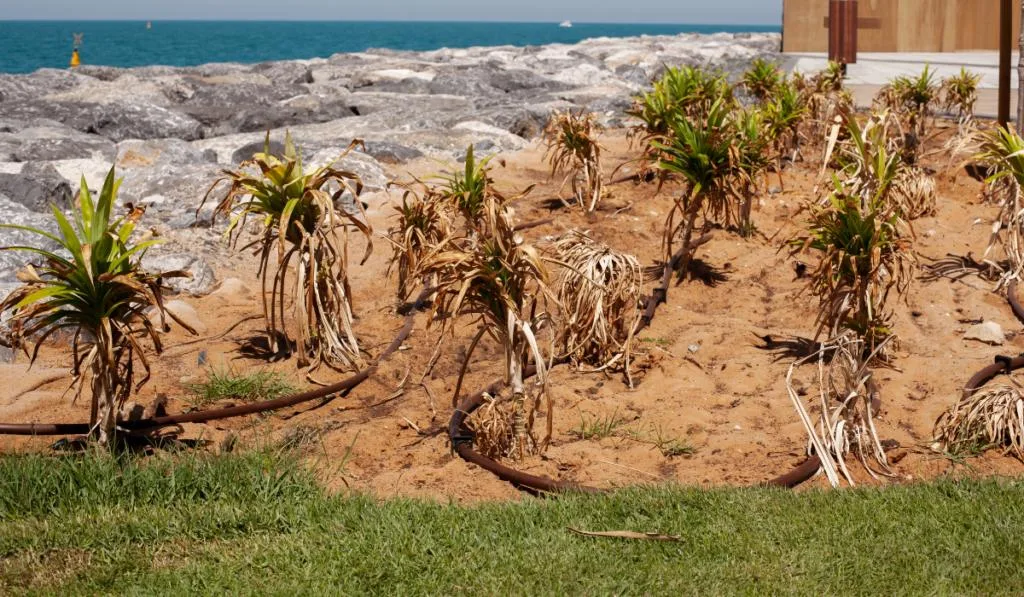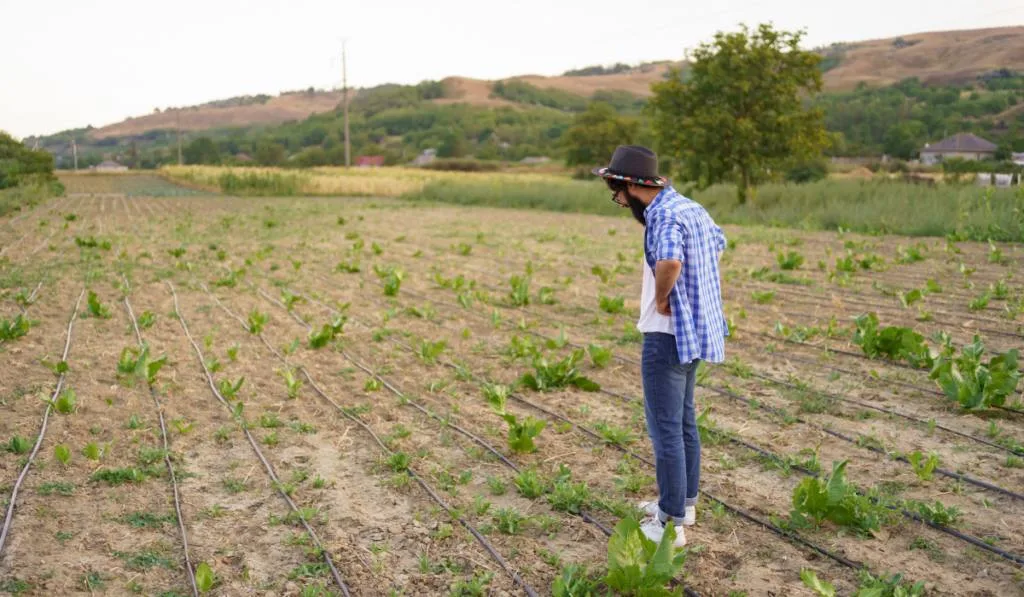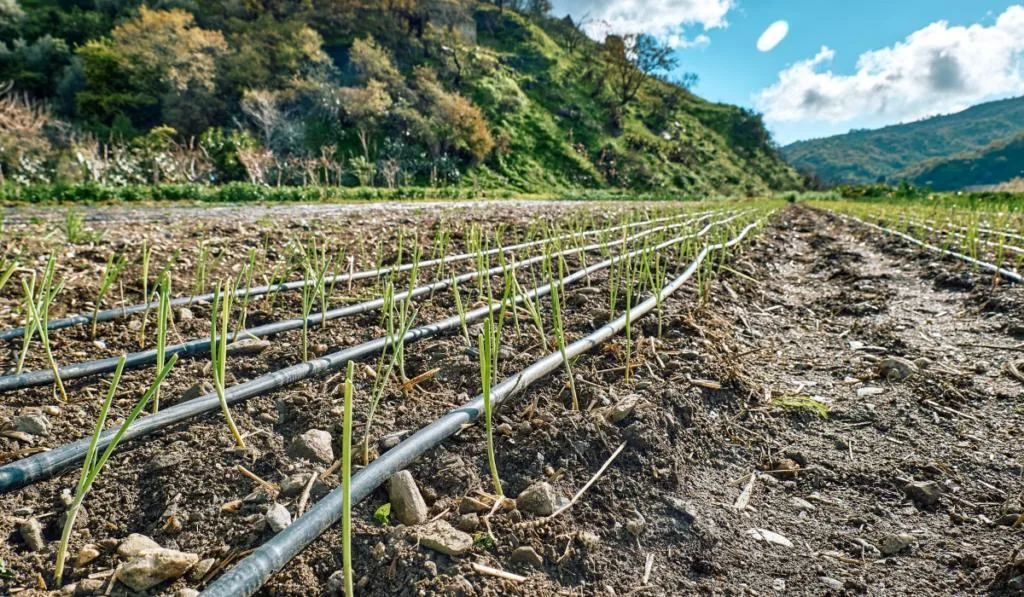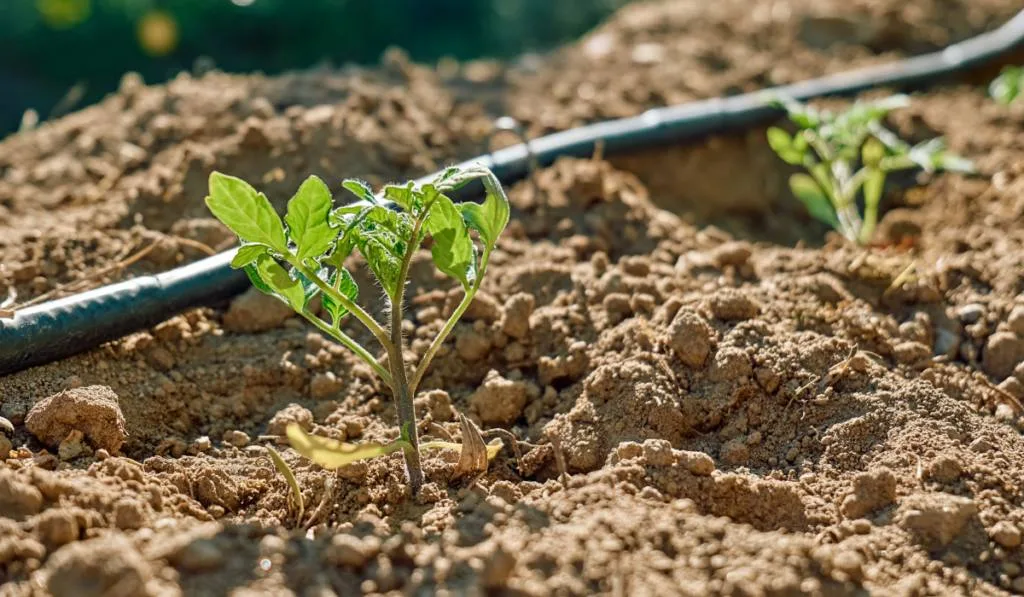Drip irrigation systems put out less water every hour than sprinklers or soaker hoses. However, they stay on longer to give your plants and garden a steady stream of water to avoid the stress of heat and sun in between waterings.
A drip irrigation system dispels water at the same rate over an hour as a hose or a regular sprinkler system in a minute. Your plants and garden, as a result, get constant water, and you don’t have to spend as much time in your yard.
How long you water plants with drip irrigation depends on what type of plants you have, climate conditions, and other factors.
Typically, homeowners with drip irrigation water once or twice a week, but water for hours instead of just minutes a day.
Here, we discuss some of the benefits and disadvantages of drip irrigation to help you decide whether it’s the right system for you and how long you should run it to keep your plants healthy.

Table of Contents
The Main Benefits of Drip Irrigation Systems
Drip irrigation systems work wonderfully for people who don’t want to constantly water their lawns by hand or in short bursts. You can set it and forget it because the system puts out smaller amounts of water drip into the soil and your plant root systems.
The main point of drip irrigation is to deliver enough water to get at least eight inches into the soil. It works well, for example, in gardens with raised planters that only have several inches of soil in them.
You don’t need the water to penetrate any further. Drip irrigation also better ensures that all parts of the ground are saturated with water.
This usually benefits plants with shallow root systems because it’s more challenging, especially in hotter climates, for drip irrigation systems to deliver water deep into the ground.
Anything lower than a foot beneath the topsoil likely won’t get the saturation you need to sustain water-heavy plants. Instead, their root systems will grow closer to the surface.

Some Disadvantages of Drip Irrigation
While drip irrigation may be beneficial for people with shallow planters and lawns, it can be a major disadvantage for homeowners in hotter areas with mature plants.
In many dryer climates, mature plants often do best when their roots go deep into the ground, where they can reach water lower down. They can absorb that water when the topsoil gets too dry. Because it’s cooler deeper in the soil, the dirt stays moist for longer.
You’ll have to run your drip irrigation much longer than you would otherwise, and it may simply be impossible to get water as deep as you need no matter how long you run your system.
Knowing how many hoses and outlets you need for optimal watering can also be challenging. Many property owners overestimate how much water comes from the hose, so they fail to install as many as their plants need.

When to Use Drip Irrigation
Whether you should use drip irrigation depends on what type of plants you have. If you have plants that can get by with watering once a week, then drip irrigation can be an easy solution that doesn’t waste water.
You get to design the drip system based on your garden or yard layout. With traditional sprinkler systems or hose watering, you use much more water in a shorter window. Homeowners usually end up with water in places that don’t need as much moisture.
Sandy soil will need more than a weekly watering, but one of the best things about drip is that you can turn the water on and go about your day.
Drip irrigation will do just fine if you’re sticking to native plants that don’t need as much water. It can be more difficult if you’re trying to keep plants that need deeper roots or more water to survive.

Increase Watering for Younger Plants
Regardless of whether you’re using drip irrigation or a sprinkler system, newer plants will need more water until their root systems can fully develop. You’ll need to water them at least twice a week for longer to get them the water they need.
A good rule of thumb is that smaller shrubs will need around six gallons of water each week. So, measure how much water your drip system delivers to the soil in the area to know how long it should run each time.
As your plants mature, you can gradually lower how much water you need to keep them healthy.

Look for Signs of Unhealthy Plants
The best way to measure your drip irrigation system is to dig into the soil to see how wet the inches beneath the surface are. You can do it simply with a stick, or you can buy fancy moisture-measuring tools that will gauge how much water is in the ground.
Look at your plants frequently to spot any signs of dry leaves that are brittle to the touch.
Additionally, yellow leaves mean you need to increase your drip duration as soon as possible. The sooner you react to any signs that show your plants need water, the more chances you’ll have to get them back in good health.
It may not be only an issue of how long you leave your drip system on. Sometimes homeowners need to increase the number of hoses and openings along the hoses.
Remember, drip irrigation systems apply water to a specific point instead of a coverage area as standard sprinkler systems do. You’ll need to ensure that everywhere around the plants or bushes is getting water.
Overall, drip irrigation is a good option for people who have gardens, greenhouses, or live in areas with dry soil. Keep your drip irrigation on for a couple of hours twice a week and see what results you get. If your plants look good, you can adjust as you go to find the sweet spot regarding how long you should leave the water on.
